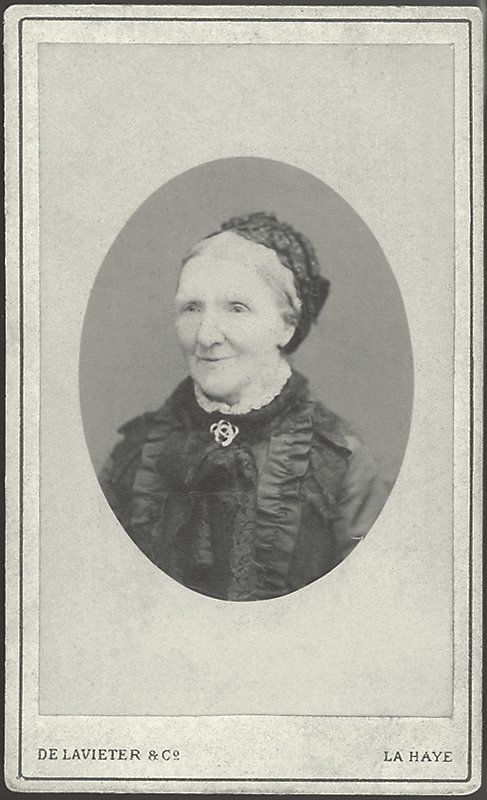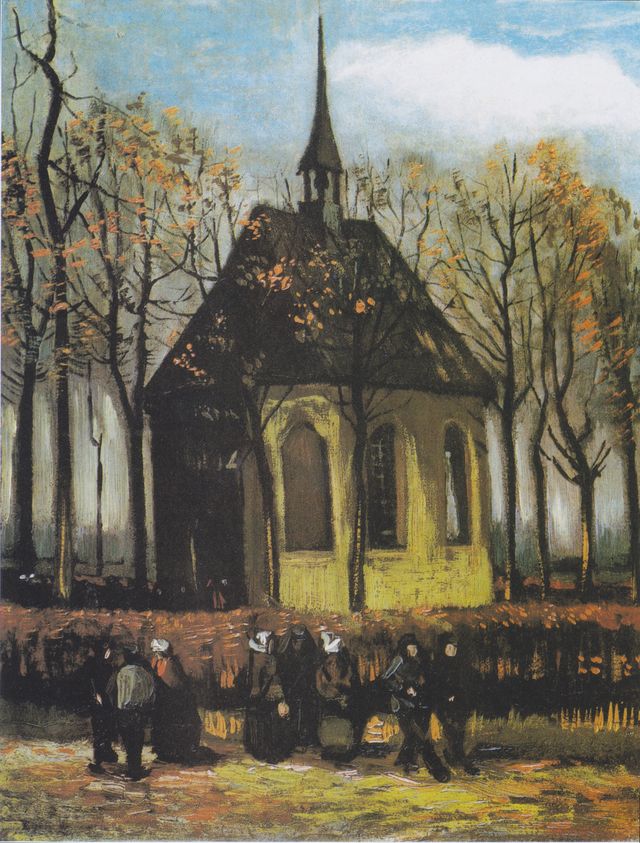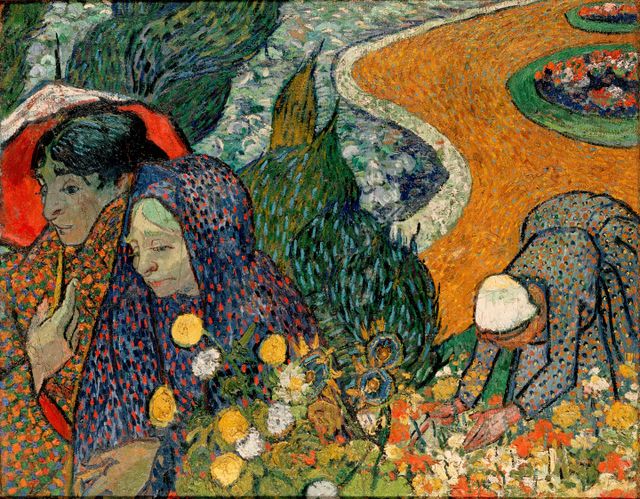Anna Cornelia Carbentus was born in The Hague on September 10, 1819. Her father was a successful bookbinder. Among other things, he had bound the first Constitution and was therefore allowed the predicate "royal. Yet it was not a trouble-free family. Her father and several children in the family were called "nervously ill. As a result, Anna would spend her life worrying about her own mental state and, once she became a mother, that of her children. Including Vincent.

On May 21, 1851, Anna married Theodorus (Dorus) van Gogh at the Kloosterkerk in The Hague. She began her married life in the rectory of Zundert, her husband's first place of employment. That was quite a thing, moving from stately The Hague to the Catholic Brabant countryside. Her first child was born lifeless in 1852. A year later Vincent, the later painter, was born. The family then steadily expanded with Anna (1855), Theo (1857), Lies (1859), Wil (1862) and Cor (1867). As a pastor's wife, she devoted herself to helping poor families, for example by preparing meals for them. In addition to caring for her family and household, helped by several maids, she spent her time gardening, making drawings and watercolors, knitting and writing letters. Vincent was no stranger to that either.

Her husband's profession brought Anna and her family from Zundert to Helvoirt in 1871, to Etten four years later and to Nuenen in 1882. When Dorus died unexpectedly in March 1885, Anna continued to live there for another year. She then moved with her youngest daughter, Wil, to Breda, where her sister Cornelie lived. The other children had all left home by then. In October 1888 Vincent painted a beautiful portrtet of Anna in France, as he remembered her, using a portrait photograph as a starting point and wearing a mourning hat because of the death of "dad. In November 1889, Anna settled with Wil in Leiden. There, in the summer of 1890, she received the news that Vincent had died in Auvers-sur-Oise. Anna died "after long suffering" on April 29, 1907, aged 87.
Exhibition of bonnets in Nuenen
Mother (and father) did not have it easy with a son who regularly embarrassed them. Yet they continued to support their son. They helped him get jobs and always offered him shelter when he needed it.
When his mother was confined to her home in Nuenen in 1884 with a broken leg, Vincent painted the Protestant church to cheer her up. He chose the subject with care: after all, his father was a minister in this church. After his father's death, Vincent adapted the work. He painted autumn leaves on the bare winter trees. He also added groups of churchgoers, some in mourning clothes.

Anna loved her children very much. Also of Vincent, the most difficult of her children. After Vincent moved to France, he wrote several letters to his mother. This kept him informed about how she was doing and he heard news from the family. Vincent seemed to be homesick for Brabant. In 1888, for example, he asked his mother to send him some drawings from Etten. Based on these - and influenced by Paul Gauguin - he lovingly painted "Remembrance of the Garden at Etten," which included Anna and his sister Wil. It was meant to hang in his bedroom.
Remembering & Visiting
Sources:
Digital Women's Lexicon of the Netherlands, Lodewijk Kallenberg.
N.A. van Beek, The Notes of Auntie Mietje van Gogh (The Hague 2010).
Willem-Jan Verlinden, The Sisters Van Gogh (Amsterdam 2016).
Lodewijk Kallenberg, "Anna Cornelia van Gogh-Carbentus, the Mother of Vincent van Gogh. Her life and her connection to Leiden, Leids Jaarboekje 111 (2019) 84-97.